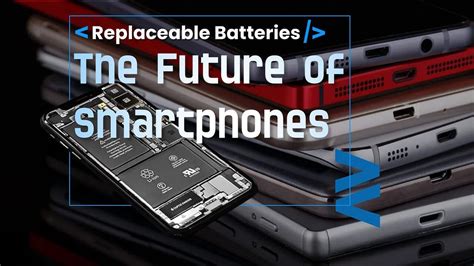The European Union’s decision to mandate replaceable batteries in mobile phones and other consumer electronics by 2027 is a radical shift with profound implications for the tech industry and consumers alike. This regulation is not just about making battery replacement easier; it’s a definitive step towards greater sustainability and consumer rights. In an industry where sealed designs have become the norm—often making battery replacement difficult if not impossible—this could represent an era of significant change.
One of the earliest concerns brought up by consumers is the ambiguity between ‘replaceable’ and ‘user-replaceable’ batteries. While technically most smartphones have replaceable batteries, the need for specialized tools or professional assistance makes it impractical for the average user. However, the new regulation demands not only easily replaceable batteries but also user-replaceability, ensuring that end users can perform battery replacements using standard commercially available tools. This aspect alone addresses a significant consumer pain point, echoing the broader repairability movement in consumer electronics.
This regulation poses substantial reengineering challenges for manufacturers. Present-day mobile phones are often tightly sealed to ensure water and dust resistance, commonly rated as IP68. Critics argue that such waterproofing is merely a convenient excuse used by manufacturers to make repairs complex and costly. However, historical evidence and existing products suggest that user-replaceable batteries and robust waterproofing can coexist. Devices like the Samsung Galaxy XCover, for instance, demonstrate that durable design and ease of repair can be balanced effectively. Incorporating O-ring gaskets and other sealing technologies can maintain high levels of water resistance.
The implications for consumers extend beyond convenience and cost savings. The regulation promotes sustainability by potentially extending the lifespan of mobile devices and reducing e-waste. Modern smartphones, often replaced due to battery degradation, could enjoy prolonged lifespans with simple battery replacements. This is a win not only for the consumers’ pockets but also for the environment, aligning with broader global efforts to mitigate the harmful effects of electronic waste. As one user aptly put it, replacing a dying battery rather than an entire phone could save hundreds of dollars annually.
However, not all reactions to the regulation have been positive. Some comments reflect concerns about potential drawbacks, such as manufacturers’ possible responses to these mandates. Suggestions include the development of proprietary tools to satisfy regulation while complicating the replacement process. Others mentioned the risk of manufacturers implementing Digital Rights Management (DRM) on hardware to enforce the exclusive use of OEM parts, potentially leading to new regulatory challenges. This underscores the paradigm shift in balancing consumer empowerment with corporate interests.
Interestingly, this move paves the way for future innovations in battery technology itself. The prospect of universally replaceable batteries might invigorate research into more resilient and longer-lasting battery chemistries. It may prompt manufacturers to explore solid-state batteries or other advanced technologies that promise longer lifespans and faster charge times. The tethering of innovation to sustainable practice is a promising development likely to benefit consumers and industries alike.
In conclusion, the EU’s regulation to mandate replaceable batteries in mobile phones by 2027 is a forward-thinking initiative with wide-reaching implications. It challenges manufacturers to rethink design principles, fosters consumer empowerment, and aligns with sustainability goals. While there are valid concerns about execution and potential manufacturer pushback, the overall direction is a positive step towards a more sustainable and user-friendly technological future. The ongoing dialogue between regulators, consumers, and manufacturers will be crucial in achieving a balance that benefits all stakeholders.


Leave a Reply